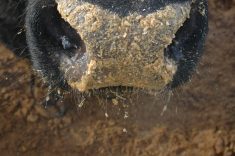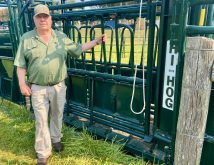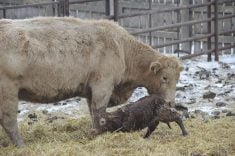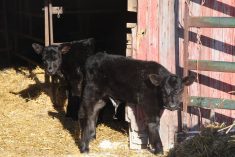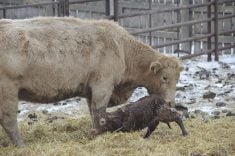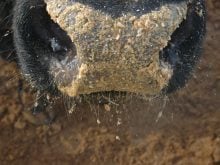There are many good reasons why later calving makes sense, but it can be challenging in dry years when pastures are of poorer quality
Deciding on the appropriate calving season for any given operation involves consideration of many factors.
Whether it’s early calving in January-February, spring calving in March-April, births in the summer months or even fall, the choice hinges on climate, marketing goals, feed costs and availability, breeding season challenges and management constraints. Each producer must weigh pros and cons to find what works best for the situation and goals.
Most beef calves have traditionally been born in early spring, a season historically rooted in the need to wean calves in fall and put them in feedlots through winter or to have bull calves old enough to sell in a spring bull sale.
Read Also

New coal mine proposal met with old concerns
A smaller version of the previously rejected Grassy Mountain coal mine project in Crowsnest Pass is back on the table, and the Livingstone Landowners Group continues to voice concerns about the environmental risks.
With increased hay prices, many cow-calf operations can’t survive financially on what they’ve done historically so many are taking a harder look at having to feed cows hay during early lactation when nutritional needs are highest.
Climate and winter hay requirements are major factors, and cold weather requires more diligence at calving.
Dr. John Campbell of the Western College of Veterinary Medicine at the University of Saskatchewan says the Western Canadian Cow-Calf Surveillance Network has data on the topic.
“Many producers are moving to later calving, when weather is warmer — calving at pasture rather than in barns. Calf death loss is much lower, calving later,” he says.
“Even in March and April, many parts of Western Canada may have bad weather. Data in Canada and the U.S. suggests that 60 percent of mortality in calves happens at birth or within the first 24 hours. Cold weather can be a factor.”
Many producers who calve early are good at managing this, however, and don’t lose calves to cold weather, but it does require more labour.
“One thing we saw with later calving and breeding in July and August was slightly lower pregnancy percentage, possibly caused by poorer pasture quality when cows are lactating and breeding,” says Campbell. Lower calf mortality in herds that calve later can offset this.
“One advantage of calving later, which we don’t have much data on, is that cows calving on pasture have more exercise than when confined in winter for closer monitoring, and fewer dystocias.
“It might be that they are breeding their cows to easier-calving bulls or partly because cows are getting more exercise. There is some value in having cows moving around more, and in better physical shape at calving time.”
Many people are making a shift to later calving, says Campbell.
“Thirty years ago, when I came to Saskatchewan, most people were calving in February and March, whereas today many are calving in April, May and June.”
Few Canadian producers calve in the fall.
“Some have a portion of the herd calving in the fall but usually their main herd calves in the spring. Winters are usually too severe to have young calves going into winter, and feed costs are higher for cows at peak lactation that time of year.
“If a person is able to keep cows grazing through most of the winter it’s maybe not as big an issue, with some kind of supplement, but it depends on the situation and feed availability, plus the type of cows you have,” Campbell says.
Calves born on grass have lower incidence of infectious disease, likely due to less fecal contamination compared to corrals.

“ Most pathogens that cause disease in young calves are carried by cows,” says Campbell. “These pathogens don’t affect the cows but can affect calves, especially if the calf comes into contact with a lot of fecal material.”
In a confined situation, feed and water may be contaminated with manure or cows lie on dirty bedding or manure and the calf suckles a filthy udder. Calving on pasture reduces death loss and sickness as well as the need for doctoring.
There are many good reasons for later calving but it can be challenging in dry years.
“If pastures are poor quality in late summer, it may be harder to meet cows’ nutritional requirements during breeding and peak lactation. This may be why we saw lower pregnancy rates in some situations,” says Campbell.
When calving in early summer, weaning those later-born calves is a timing issue. Weaning in fall may be too early if calves are only four or five months old, and weaning in January may be too cold.
Some producers leave calves on cows through winter and wean in March. Cows are past peak lactation by then and have time to recover on green grass so they are ready to calve again in May or June.
Weaning late has market advantages.
“In our area the market is seasonal, with most calves sold in November,” says Campbell, and volume tends to lower the price. “If you sell calves later — in February, March or April — the market may be better again.”





